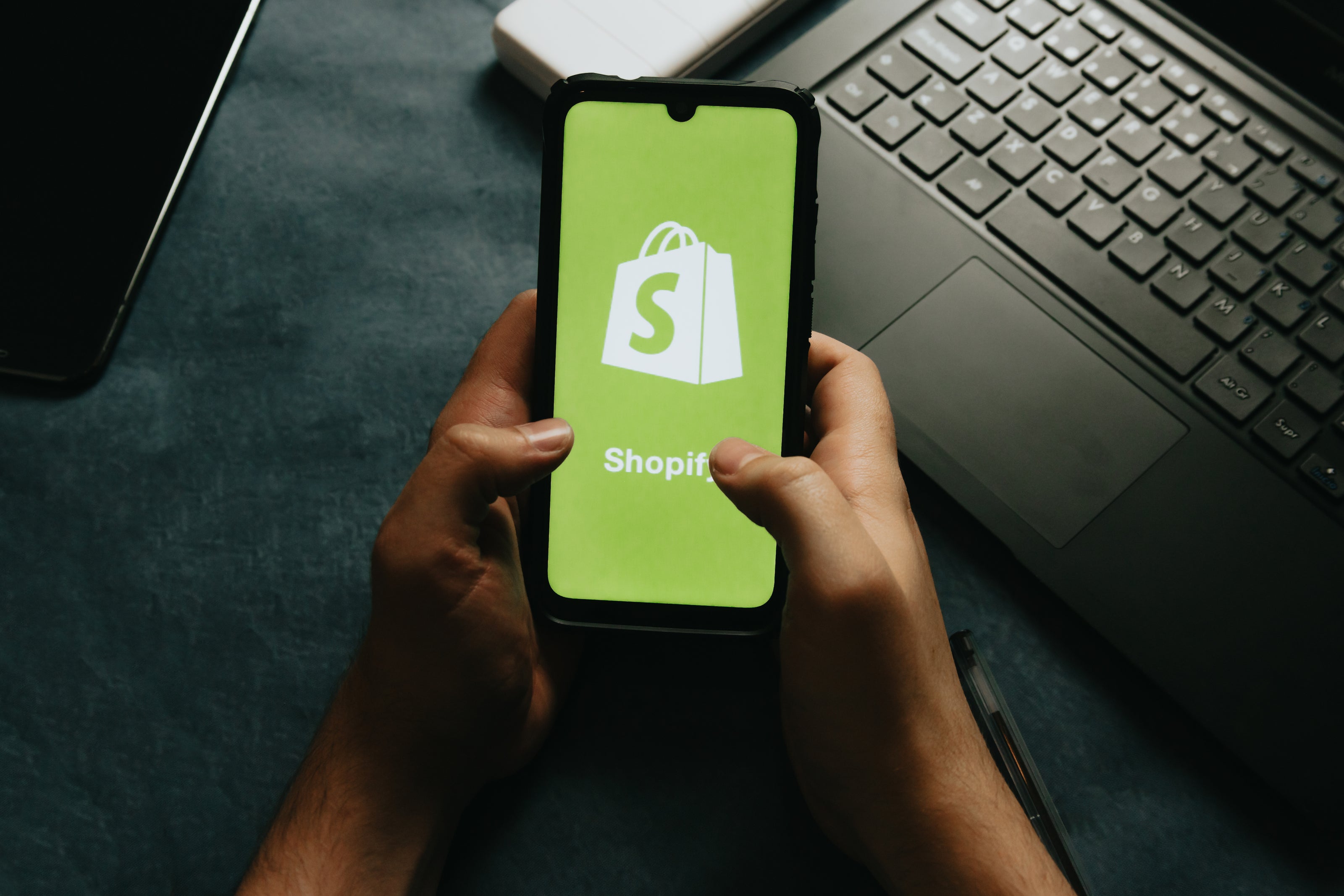
The Future of Dropshipping: Trends and Predictions for 2025 and Beyond
Share
I am always being asked, What is the future of dropshipping? How long will dropshipping last?? Dropshipping has been the starting point for online business and certainly e-commerce for over a decade now, and those new to the industry are now met with a wave of gurus selling Dropshipping courses vs those telling you that it is saturated. In short, the industry has evolved and understanding customer demand is crucial for adapting to the evolving dropshipping landscape and upcoming trends.
In this article, we will explore various aspects that will shape the future of dropshipping, from niche markets to the role of technology and sustainability. These insights will help entrepreneurs navigate the changing landscape and exploit new opportunities for 2025.

So, What is The Future of Dropshipping? Here are the Key Takeaways
- Niche-specific dropshipping will become more popular, allowing businesses to target specific customer needs.
- AI and automation will play a key role in improving efficiency and customer interactions in dropshipping.
- Sustainability practices will be essential for attracting eco-conscious consumers and building brand loyalty.
- Emerging global markets present new opportunities for dropshippers looking to expand their reach.
- Personalization will be crucial for enhancing customer experiences and driving repeat business.
- The dropshipping business model will be important in the future due to its low-risk nature and potential for growth. This modern approach to eCommerce eliminates upfront costs and inventory challenges, allowing sellers to focus on product selection and marketing without the burdens of warehousing or shipping logistics.
The Rise of Niche-Specific Dropshipping
In recent years, there has been a noticeable shift towards niche-specific dropshipping. Instead of trying to sell everything to everyone, many businesses are focusing on a specific area - this change is driven by consumers who want products that meet their unique needs and interests.
Benefits of Focusing on a single Dropshipping Niche
- Targeted Marketing: By concentrating on a niche, businesses can tailor their marketing efforts to a specific audience, it also builds topical authority on a subject and you become the go-to brand for this niche which can become very powerful.
- Loyal Customer Base: Specializing helps in building a community of loyal customers who share similar interests.
- Less Competition: Niche markets often have fewer competitors, making it easier to stand out.
Examples of Successful Niche Stores
|
Niche |
Example Store |
Description |
|---|---|---|
|
Eco-Friendly Products |
GreenGoods |
Offers sustainable and eco-friendly items. |
|
Pet Accessories |
Paws & Claws |
Specializes in unique pet products. |
|
Tech Gadgets |
Gadget Galaxy |
Focuses on the latest tech innovations. |
|
Pet Products |
PetCare Drops |
A drop shipping business that capitalizes on the growing expenditure on pet care, as owners increasingly consider their pets as family, making it a financially rewarding opportunity. |
Challenges of Niche-Specific Dropshipping
-
- Limited Audience: A smaller target market can mean fewer sales opportunities.
-
Supplier Issues: Finding reliable dropshipping suppliers for niche products can be challenging. Thorough research is essential to vet suppliers, ensuring product quality and fast shipping times.
-
Market Changes: Trends can shift quickly, making it essential to stay updated.
- Focusing on a niche can lead to greater success but it requires careful planning and execution - understanding micro-dropshipping-niches is crucial for those looking to thrive in this space. By 2025, niche-specific dropshipping is expected to dominate the market, leaving general stores struggling unless they offer unique products or exceptional value.
The Integration of AI and Automation in Dropshipping

AI-Driven Product Research
Artificial Intelligence (AI) is changing how dropshippers find products. AI can analyze large amounts of data to spot trends and predict what customers want. This helps businesses choose the right products to sell. Here are some benefits of using AI for product research:
- Faster data analysis
- Better understanding of customer preferences
- Improved inventory decisions
- Enhanced evaluation and selection of reliable dropshipping suppliers
Artificial Intelligence (AI) is changing how dropshippers find products
Automation Tools for Inventory Management
Automation tools are essential for managing inventory efficiently, they can handle tasks like updating stock levels and processing orders automatically - this means dropshippers can focus on growing their business instead of getting stuck in daily tasks. Some key advantages include:
- Reduced human error
- Time savings
- Real-time inventory tracking
Enhancing Customer Service with AI
AI is also improving customer service in dropshipping. Chatbots and virtual assistants can answer customer questions 24/7 providing instant support which leads to happier customers and can increase sales. Here are some ways AI enhances customer service:
-
Quick response times
-
Personalized shopping experiences
-
Efficient handling of common inquiries
By 2025, AI and automation will be integral to the success of dropshipping businesses with companies that fail to adopt these technologies at risk of falling behind. In summary, the integration of AI and automation is not just a trend; it’s becoming a necessity for a successful dropshipping business. Businesses that embrace these technologies will likely thrive in the competitive market ahead.
The Importance of Sustainability and Ethical Practices

Sustainability and ethical practices are becoming crucial in the dropshipping world. As more people care about the environment, they want to buy products that match their values, and maintaining high product quality in sustainable practices is essential. This change is pushing dropshippers to rethink how they source, package, and ship their products. By embracing eco-friendly dropshipping, businesses can attract more customers and build lasting relationships.
Eco-Friendly Product Sourcing
- Focus on products made from sustainable materials.
- Partner with suppliers who prioritize ethical practices.
- Ensure that products are certified as eco-friendly.
Sustainable Packaging Solutions
- Use recyclable or biodegradable materials for packaging.
- Reduce excess packaging to minimize waste.
- Consider reusable packaging options to cut down on waste.
Carbon-Neutral Shipping Options
- Offer shipping methods that offset carbon emissions.
- Collaborate with shipping companies that prioritize sustainability.
- Educate customers on the benefits of choosing eco-friendly shipping options.
The future of dropshipping will heavily rely on sustainability. Companies that show a commitment to ethical practices will stand out in a crowded market.
In summary, dropshippers who focus on sustainability will not only meet consumer demand but also gain a competitive edge in the industry. As we move towards 2025, expect to see a significant shift towards eco-friendly practices in dropshipping.
The Expansion of Global Markets

The world of ecommerce is growing fast and dropshipping is part of this trend. As more people get online, dropshippers can reach customers in new places. Emerging markets like Southeast Asia, Latin America and Africa are seeing a big rise in online shopping, this growth is fueled by more people having money to spend and more smartphones being used.
Emerging Markets to Watch
- Southeast Asia: Expected to reach $186 billion in ecommerce by 2025.
- Latin America: Rapidly increasing internet access and smartphone use.
- Africa: A growing middle class eager to shop online.
Strategies for International Expansion
- Research: Understand the local market needs and preferences.
- Localize: Adapt your website and marketing to fit local languages and cultures. Tailored marketing strategies are crucial for different international markets to effectively reach and engage local audiences.
- Payment Options: Offer payment methods that are popular in the target market.
Challenges of Global Dropshipping
- Shipping Costs: Higher costs can cut into dropshipping profit margins.
- Regulations: Different countries have different rules for selling products.
- Competition: More sellers mean more competition for customers.
Expanding into global markets can be a game-changer for dropshippers. By tapping into new customer bases, businesses can significantly increase their sales and brand presence.
The Evolution of Social Commerce
Social commerce is changing how we shop online. By 2025, social commerce sales will account for 17% of global e-commerce transactions. This means that buying products directly through social media is becoming more popular.
Social Media Platforms as Sales Channels
- Instagram, Facebook, and TikTok are leading the way in social commerce, with apps like TikTok shop there is a changing landscape in the dropshipping world and many more avenues for revenue - Yes, you can dropship with TikTok shop!
- These platforms allow users to browse and buy products without leaving the app, making it crucial to optimize them to drive traffic to your online store.
- Younger consumers are especially drawn to shopping on social media.
Engaging Customers Through Social Commerce
- Brands can connect with customers through engaging content.
- Live shopping events are becoming popular, allowing real-time interaction.
- Influencer partnerships can help reach a wider audience.
Trends in Social Commerce
- The market for social commerce is expected to grow rapidly.
- Companies that adapt to these changes will likely see increased sales.
- Emerging markets are also becoming important for social commerce growth.
Social commerce is not just a trend; it’s a new way of shopping that combines social interaction with buying.
As we look to the future, businesses that embrace social commerce will be well-positioned to thrive in the evolving e-commerce landscape.
The Growing Role of Personalization

Personalized Shopping Experiences
In today's market, personalization is key to attracting and keeping customers. Shoppers want experiences that feel tailored just for them. This can include:
- Customized product recommendations based on past purchases.
- Special offers that match individual preferences.
- Targeted marketing messages that resonate with their interests.
Using Data to Drive Personalization
To create these personalized experiences, dropshippers can use data effectively. Here are some ways to do this:
- Analyze customer behavior to understand what they like.
- Use AI tools to predict future purchases.
- Develop a data-driven marketing strategy to offer personalized bundles that cater to specific needs.
Benefits of Personalization in Dropshipping
Personalization not only enhances the shopping experience but also brings several advantages:
- Increased customer loyalty: Shoppers are more likely to return if they feel understood.
- Higher conversion rates: Personalized offers can lead to more sales.
- Better customer retention: Satisfied customers are less likely to switch to competitors.
Personalization is not just a trend; it’s becoming a necessity in the dropshipping world - brands that embrace this will likely see significant growth.
In summary, as the dropshipping market continues to evolve, focusing on personalization will be crucial. With the global dropshipping market expected to reach $476.1 billion by 2026, businesses that prioritize personalized experiences will stand out and thrive in this competitive landscape.
The Rise of Direct-to-Consumer (DTC) Dropshipping

Direct-to-Consumer (DTC) dropshipping is becoming more popular as brands want to connect better with their customers. Instead of just using big platforms like Amazon, many dropshippers are now creating their own websites to sell directly to buyers. This method gives dropshippers more control over their branding, pricing, and customer experience.
Advantages of the DTC Model
- Better Control: Brands can manage their image and how they present their products.
- Direct Relationships: Selling directly helps build trust and loyalty with customers.
- Data Collection: Businesses can gather important information about their customers to improve products and marketing.
Building a Strong Brand Identity
Creating a strong brand is essential for DTC dropshipping. Here are some key points to consider:
- Unique Branding: Develop a memorable logo and brand story.
- Consistent Messaging: Ensure all communications reflect the brand's values.
- Engaging Content: Use social media and blogs to connect with customers.
Collecting and Utilizing Customer Data
Understanding customer behavior is crucial. Here’s how to effectively use data:
- Analyze Purchases: Look at what customers buy to tailor offerings.
- Feedback Loops: Encourage reviews and feedback to improve services.
- Targeted Marketing: Use data to send personalized offers to customers.
The DTC model is not just a trend; it’s a shift towards more meaningful customer relationships. As the global ecommerce market continues to grow, dropshippers who adapt will thrive.
In summary, DTC dropshipping offers many benefits, but it also requires a focus on branding and customer engagement. As the market evolves, those who embrace this model will likely see significant success.
Challenges and Opportunities in the Future of Dropshipping

The dropshipping industry is evolving, presenting both challenges and exciting opportunities. As we look ahead, several key factors will shape the landscape.
Increasing Competition
- More businesses are entering the dropshipping market.
- Unique selling propositions are essential to stand out and maintain a profitable business model amidst competition.
- Brands must innovate to attract and retain customers.
Rising Customer Expectations
- Customers now demand faster shipping and better service.
- Personalization is becoming crucial for customer loyalty.
- Brands need to adapt quickly to meet these expectations.
Opportunities for Innovation
- Embracing new technologies can streamline operations.
- AI and automation can enhance product research and customer service.
- Sustainable practices can attract eco-conscious consumers.
The future of dropshipping is set to expand even more with new challenges and exciting prospects – from ever-evolving technologies to shifting customer demands.
In summary, while the dropshipping landscape is becoming more competitive, those willing to adapt and innovate will find numerous opportunities to thrive. By focusing on customer satisfaction and leveraging technology, dropshippers can position themselves for success in the coming years.
The Impact of Mobile Commerce on Dropshipping

As mobile devices become the primary way people shop, dropshipping businesses must adapt to this trend. Mobile commerce is not just a passing phase; it’s a significant part of the future of online shopping - here’s how it’s changing the dropshipping landscape:
Optimizing for Mobile Users
- Ensure your website is mobile-friendly.
- Use responsive design to improve user experience.
- Simplify navigation for easier access to products.
Mobile Payment Solutions
- Offer various payment options like Apple Pay and Google Pay.
- Ensure secure transactions to build customer trust.
- Consider integrating one-click payment solutions for convenience.
Trends in Mobile Shopping
| Trend | Description |
|---|---|
| Increased App Usage | More consumers are using apps for shopping. |
| Social Media Integration | Shopping directly through social media platforms. |
| Voice Search Optimization | Adapting to voice commands for product searches. |
Mobile commerce is reshaping how consumers shop, making it essential for dropshippers to prioritize mobile optimization.
In conclusion, as mobile commerce continues to grow, dropshipping businesses that embrace these changes will be better positioned to succeed in the competitive market. The future is mobile, and adapting to it is crucial for survival.
The Role of Augmented Reality (AR) in Dropshipping
Enhancing Shopping Experiences with AR
Augmented Reality (AR) is changing how people shop online. It allows customers to see products in their own space before buying. This makes shopping more fun and interactive. With AR, customers can visualize how a product will look in their home or on themselves, leading to better purchasing decisions.
AR Tools for Product Visualization
Here are some popular AR tools that dropshippers can use:
- IKEA Place: Lets users see how furniture fits in their home.
- Sephora Virtual Artist: Allows customers to try on makeup virtually.
- Warby Parker: Offers a virtual try-on for glasses.
Future Prospects of AR in Ecommerce
The AR market is expected to grow significantly. By 2025, it could reach over $198 billion - this growth means more dropshipping businesses will likely adopt AR to stay competitive. Here are some benefits of using AR:
- Increased Customer Engagement: AR makes shopping more exciting.
- Higher Conversion Rates: Customers are more likely to buy after using AR.
- Improved Customer Loyalty: Fun shopping experiences can keep customers coming back.
As AR technology becomes more common, dropshipping businesses that use it will stand out in a crowded market.
Subscription-Based Models in Dropshipping

Benefits of Subscription Services
Subscription-based models are becoming increasingly popular in the dropshipping world. These models provide a steady revenue stream for businesses. Here are some key benefits:
- Consistent Income: Regular subscriptions help stabilize cash flow.
- Customer Loyalty: Subscribers are more likely to return, enhancing customer retention.
- Simplified Inventory Management: Predictable demand makes it easier to manage stock levels.
Popular Subscription Products
Many products work well with subscription models. Here are a few examples:
- Beauty Products: Monthly beauty boxes are a hit among consumers.
- Health Supplements: Regular deliveries of vitamins and supplements keep customers healthy.
- Pet Supplies: Pet owners appreciate the convenience of scheduled deliveries for food and toys.
Implementing a Subscription Model
To successfully implement a subscription model, consider these steps:
- Choose the Right Products: Focus on items with high repeat purchase rates.
- Offer Flexible Plans: Allow customers to choose delivery frequency.
- Provide Excellent Customer Service: Address any issues quickly to maintain satisfaction.
Subscription-based models are gaining traction in the dropshipping industry. Instead of one-time purchases, customers can subscribe to receive products regularly, providing a steady revenue stream for businesses.
By adopting subscription services, dropshipping businesses can not only enhance customer loyalty but also create a more predictable income flow. This approach is a promising trend for the future of dropshipping.
Conclusion
So, What is the future of dropshipping? How long will dropshipping last??
The dropshipping world is changing fast, and those who want to succeed must keep up. Whilst there may be more competition than 10 years ago, there are many more opportunities. To thrive, dropshippers need to be flexible, embrace new technologies and focus on what customers want. When you start a dropshipping business, it is crucial to adapt to new trends and have realistic expectations due to the increasing competition and market saturation. The dropshipping landscape has changed and will continue to change but those who adapt and are innovative will find success in this exciting market.
Further Reading
Oberlo Vs DSers for Dropshipping
Best Shopify Themes for Dropshipping
Essential Shopify Apps for your Dropshipping Store
Frequently Asked Questions
What is dropshipping?
Dropshipping is a way to sell products without keeping them in stock. When someone buys something from your store, you order it from a supplier who ships it directly to the customer.
Is dropshipping still a good business model in 2025?
Yes, dropshipping is evolving and can still be successful if you adapt to new trends and focus on building a brand.
How can I choose a niche for my dropshipping store?
Look for products that interest you and have a specific audience. Research trends and see what people are looking for.
What are the benefits of using AI in dropshipping?
AI can help you find popular products, manage inventory, and improve customer service, making your business run smoother.
How important is sustainability in dropshipping?
Sustainability is becoming essential. Many customers prefer brands that use eco-friendly products and practices.
What are direct-to-consumer (DTC) dropshipping models?
DTC dropshipping means selling directly to customers through your own website, instead of relying on third-party platforms.
How can social media help my dropshipping business?
Social media platforms are great for reaching customers. You can showcase products and engage with buyers directly.
What challenges do dropshippers face today?
Dropshippers face tough competition, high customer expectations, and the need to keep up with new technology.











































































































